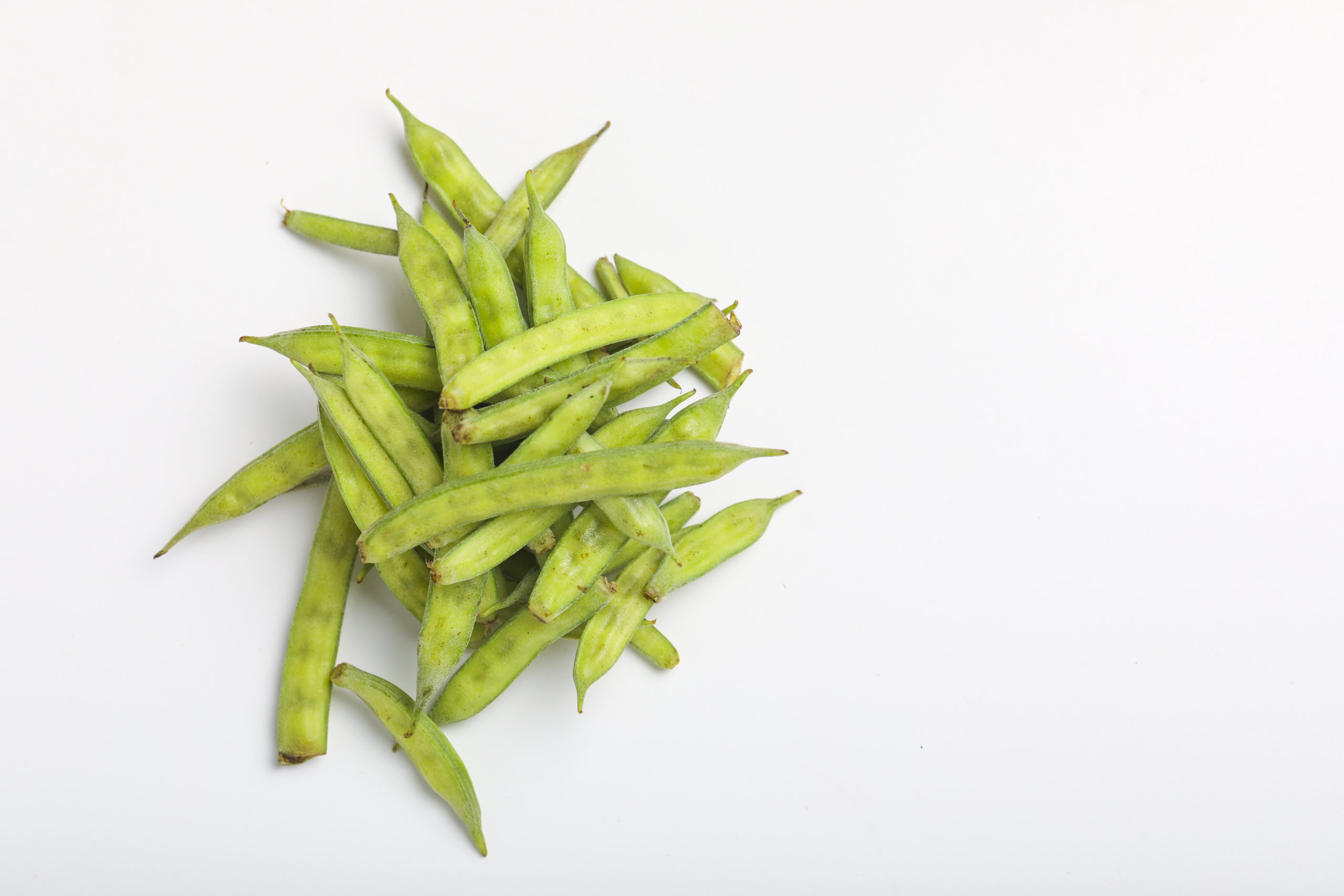September 3rd, 2020
Partially Hydrolyzed Guar Gum (PHGG) vs. Guar Gum

The 20 grams of fiber in the F-Factor 20/20 Fiber/Protein Powders come from partially hydrolyzed guar gum (PHGG). This FDA-approved dietary fiber comes from the Cyamopsis tetragonoloba plant, also known as guar bean. While both guar gum and PHGG originate from the guar bean, they differ significantly in their chemical makeup, and their approved usage limits and properties vary greatly.
WHAT IS PHGG?
Partially Hydrolyzed Guar Gum (PHGG) is a water-soluble, prebiotic, FDA-approved dietary fiber that comes from the guar bean plant. It is treated with enzymes that break it down, greatly reducing its thickness compared to guar gum. PHGG has been extensively studied; there are over 100 human clinical trials showing its safety and efficacy at high intake levels (60+ grams/day). PHGG promotes bowel regularity and selectively improve the health of beneficial gut bacteria. It can promote healthy blood sugar and cholesterol levels and provide a satiety effect by regulating hunger/fullness hormones such as CCK, or cholecystokinin. PHGG has been used in various food products, dietary supplements, and medical foods for over 25 years.
HOW DOES PHGG DIFFER FROM GUAR GUM?
Guar gum, on the other hand, is used as a thickener or emulsifier. It is used in small quantities in different food products. Guar gum is extremely thick, with a viscosity approximately 250 times greater than PHGG. In large quantities, high-viscosity guar gum can cause obstruction of the esophagus or small bowel due to its ability to expand to 10-20 times its size. Because of these side effects, the FDA implemented stringent guidelines on its inclusion in foods as a thickener. F-Factor products DO NOT contain high-viscosity guar gum (also referred to as “guar gum”).
PHGG & F-FACTOR
PHGG is widely studied with well-established safety and efficacy and a long-standing history of successful clinical trials. F-Factor products are 100% safe for consumption when used as directed by the products packaging and are a healthy, delicious addition to any diet to boost fiber intake.
KEY TAKEAWAYS
- While derived from the same plant, guar gum and partially hydrolyzed guar gum are two very different substances.
- F-Factor 20/20 Fiber/Protein Powders use PHGG, NOT guar gum, as their fiber source
- PHGG has been tested in humans at high intake levels (60+g/day) and is safe and effective at those levels
- We chose PHGG as the source of fiber in our products given the well-established, clinically proven benefits and our products are 100% safe for consumption when used as directed on the package.
REFERENCES
- Carlson, J. Slavin, J., et al. In vitro analysis of PHGG fermentation on identified gut microbiota. Anaerobe. 42, pp60-66, 2016
- Giaccari, S, et al. Partially hydrolyzed guar gum: a fiber as coadjuvant in the irritable colon syndrome. Clin Ter. 152, pp21-5, 2001
- Giannini, E, et al. Role of partially hydrolyzed guar gum in the treatment of irritable bowel syndrome, Nutrition. 22, pp334-342, 2006
- Golay, A, et al. The effect of a liquid supplement containing guar gum and fructose on glucose tolerance in non-insulin-dependent diabetic patients. Nutr. Melab Cardiovasc Dis. 5, pp141-148, 1995.
- Heini, A.F., et al. Effect of hydrolyzed guar fiber on fasting and postprandial satiety and satiety hormones: a double-blind, placebo-controlled trial during controlled weight loss. International Journal of Obesity. 22, pp906-909, 1998.
- Kapoor, et al. Soluble dietary fibre partially hydrolyzed guar gum markedly impacts on postprandial hyperglycaemia, hyperlipidaemia and incretins metabolic hormones over time in healthy and glucose intolerant subjects. Journal of Functional Foods 24, pp207-220, 2016
- Lewis, J.H. Esophageal and small bowel obstruction from guar gum-containing “diet pills”: analysis of 26 cases reported to the Food and Drug Administration. Am J Gastroenterol. 10, 1992
- Minekus, M, et al. Effect of partially hydrolyzed guar gum (PHGG) on the bioaccessibility of fat and cholesterol, Biosci. Biotechnol. Biochem. 69, pp932- 938, 2005.
- Niv, E, et al. Randomized clinical study: PHGG versus placebo in the treatment of patients with IBS. Nutrition & Metabolism. 13, pp10, 2016
- Ohashi Y, et al. Faecal fermentation of partially hydrolyzed guar gum, J. Funct. Foods. 4, pp398-402, 2012
- Rao T.P., et al. Post-meal perceivable satiety and subsequent energy intake with intake of partially hydrolyzed guar gum. British Journal of Nutrition. 113, pp1489-98, 2015.
- Slavin, JL, et al. Partially hydrolyzed guar gum: clinical nutrition uses, Nutrition, 19, pp549-552, 2003.
- Takahashi, H, et al. Influence of partially hydrolyzed guar gum on constipation in women. J. Nutr, Sci. Vitaminol., 40, pp251-259, 1994.
- Takahashi, H, et al. Effect of partially hydrolyzed guar gum on fecal output in human volunteers. Nutritional Research, 13, pp649-657, 1993.
- Tokunaga, M, et al. Effect of PHGG on Postprandial hyperglycemia – A randomized double-blind, placebo controlled crossover study. Jpn Pharamcol Ther. 44, pp185-91, 2016.
- Yasukawa, et al. Effect of repeated consumption of PHGG on fecal characteristics and gut microbiota: A randomized, double-blind, placebo-controlled and parallel-group clinical trial. Nutrients 2019, 11, 2170.
- Yoon, SJ, et al. Physiological functions of partially hydrolyzed guar gum, J Clin Biochem Nutr. 39, pp134-144, 2006.
Related
